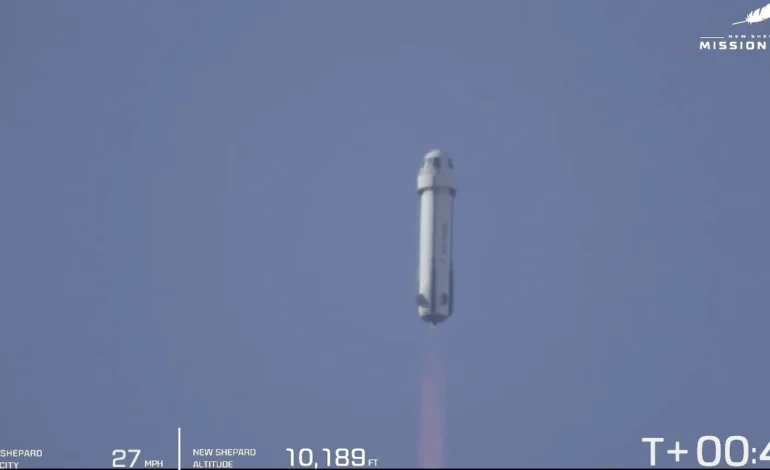Jeff Bezos’ Blue Origin successfully simulated lunar gravity for NASA in a suborbital flight from its West Texas launch site on Tuesday, The Associated Press reports.
The New Shepard rocket carried 29 lunar technology experiments to the edge of space, providing a brief taste of the moon’s gravitational pull.
Blue Origin confirmed that the capsule achieved approximately two minutes of artificial lunar gravity, which is one-sixth that of Earth’s, by spinning at a rate of 11 times per minute. This marked the company’s first attempt at replicating lunar gravity in flight.
NASA aims to utilize these short spaceflights to rigorously test equipment and identify potential issues before deploying them on lunar missions. The experiments, largely sponsored by NASA, included investigations into methods for preventing lunar dust from contaminating future moonwalkers’ spacesuits and tools.
“Mimicking the moon’s gravity on spaceflights can accelerate research at much lower costs,” Blue Origin CEO Dave Limp stated on X prior to the flight, adding that future trips could “closely mirror Mars and other solar system gravity environments.”
The New Shepard rocket executed a successful landing as planned after the late morning liftoff. Subsequently, the capsule, carrying the experiments, parachuted back to the desert, concluding the 10-minute flight.
Blue Origin’s New Shepard program alternates between carrying passengers and scientific experiments on brief suborbital hops. The company’s larger orbital rocket, New Glenn, completed its inaugural launch from Cape Canaveral, Florida, last month.








